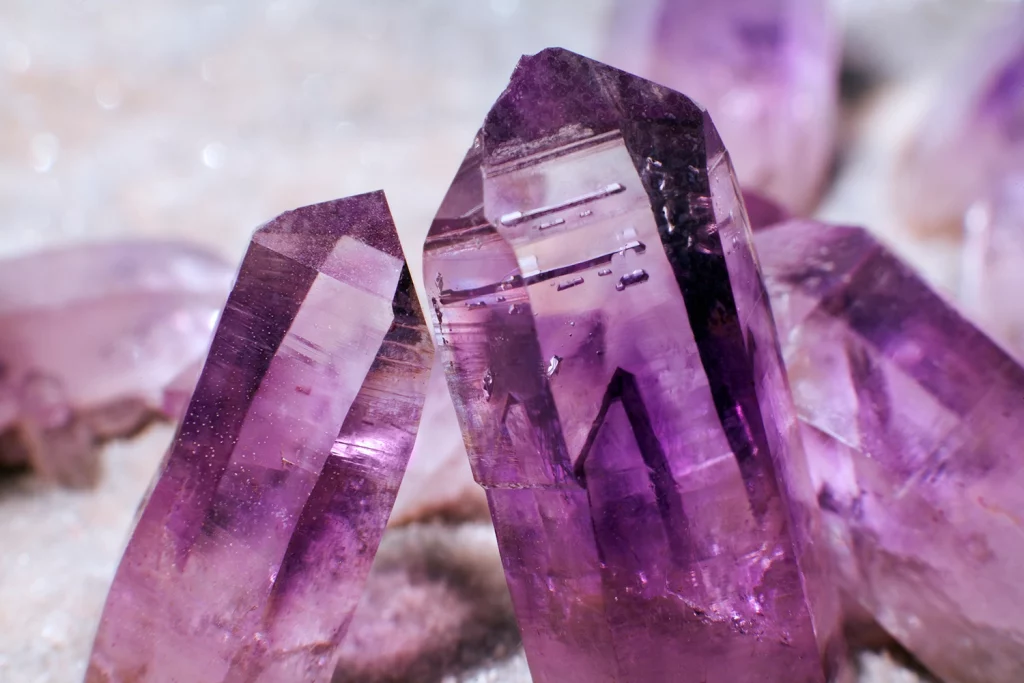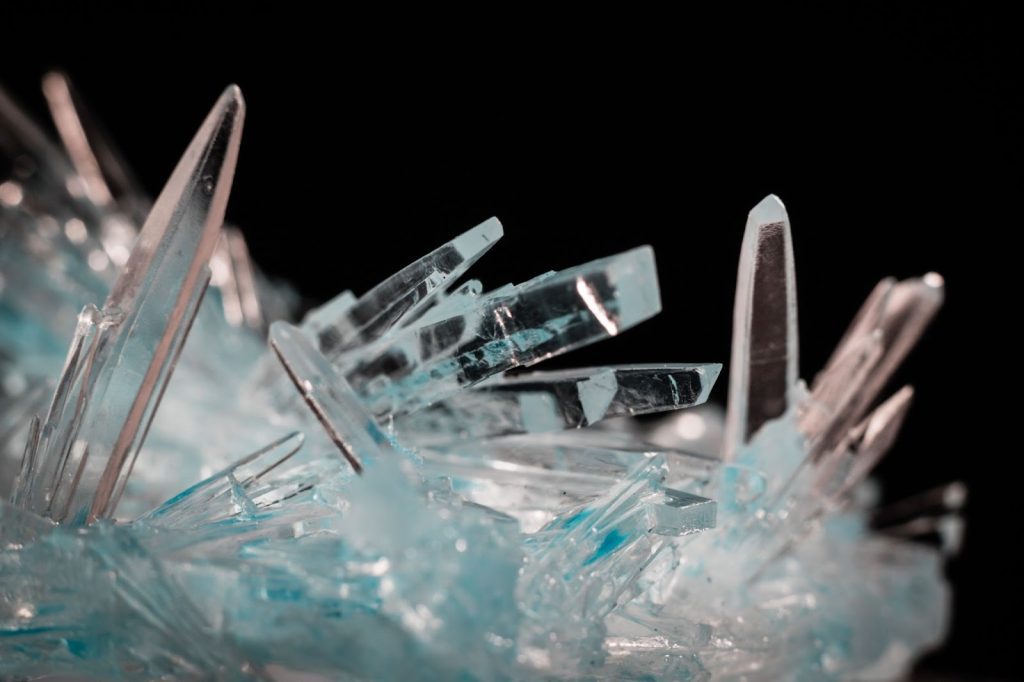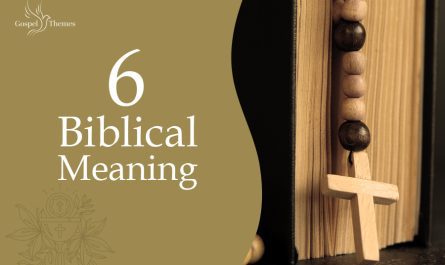Lately, gems have become progressively famous, with many believing in their mystical powers and healing properties. God created these precious stones, but what is the actual biblical meaning of crystal?
As a strong otherworldly instrument made by God, it’s only fitting to believe that our Lord put these precious stones on Earth to help us in troubling times.
Let’s learn how these precious stones were utilized in different ways throughout the Holy Book.

Biblical Meaning of Crystal
Numerous references to crystals and precious stones are found in the Bible, indicating that they played a significant role in the beliefs and lives of Christian people. In fact, the Bible talks about crystals more than 200 times.
In the book of Revelation, particularly in the verses Revelation 21:11-20, it explains how the New Jerusalem is made of glass, a very precious jewel even resembling a crystal. This is one of the most significant references to crystals in the Bible.
A few translations suggest that this glass could be a reference to a precious stone called quartz, which was profoundly esteemed in old times for its transparency and clarity.
The Bible also mentions crystals in a number of other places in the Old Testament.
What does the Bible say about crystals?
Crystals are often used in the Catholic church’s liturgy. For instance, a precious metal cup, often richly enameled and jeweled, is sometimes utilized during mass to hold the blessed wine. The gems are used to address the presence of God and are an image of virtue and sacredness.
Does the Bible mention crystals? The book of scriptures specifies a few sorts of gems all throughout its pages. In Exodus 28:17-20, God tells Moses to make a breastplate for Aaron that contains twelve stones addressing the twelve clans of Israel. These stones are different kinds of quartz.
Moreover, John says that the foundations of New Jerusalem were made of twelve different kinds of precious stones in Revelation 21:19-20.
Gems have been used in Christian craftsmanship since the beginning of time. Crystals, often depicting divine light or spiritual energy, are prominently featured in numerous Renaissance paintings. Crystals are frequently depicted as being held by saints or angels.
This symbolism continued into the modern era when stained glass windows in churches started to feature images of crystals. Gemstones and metals are also frequently found in prayer beads.
What are the most used Bible verses referencing crystals?
The Bible makes a few mentions of various kinds of crystals. Topaz is mentioned in Job 28:19, sapphires in Lamentations 4:7, and rubies in Proverbs 8:11.
Twelve stones bearing the names of Israel’s tribes were engraved on the breastplate that the Levitical High Priest wore: carnelian, chrysolite, and beryl were in the first row; turquoise, lapis lazuli, and emerald were in the second row; amethyst, jacinth, and agate were in the third row.
Onyx, jasper, and topaz were in the fourth row. According to Exodus 39:10-13, “they were mounted in gold filigree settings.”
The river flowing from the heavenly throne is described as “clear as crystal” (Revelation 22:1), the area before the throne is “a sea of glass, clear as crystal” (Revelation 4:6), and “spread out above the heads of the living creatures was what looked something like a vault, sparkling like crystal, and awesome” (Ezekiel 1:22).
Which Are the 12 Gems of the Bible?
The Bible’s twelve gems serve as a powerful representation of Israel’s 12 tribes. They are referenced in the book of Exodus and are said to address the 12 children of Jacob. The jewels are otherwise called the Breastplate of Aaron, and the High Priest wore them as an indication of his position.
The 12 gems represent a variety of things, including spiritual security, wealth, and power. They are a sign of faith and hope in Christianity. Some priests and ministers actually wear some of these gems in their services due to their special properties and the otherworldly and divine association they bring.
Sapphire
Sapphire is mentioned in Exodus 24:10 as one of the stones Aaron used to adorn his breastplate. Ezekiel 28:13 also mentions sapphire, describing it as a covering for God’s throne.
Sapphire can be used as a talisman to bring wisdom and protection. You can involve it in assisting with opening up profound spiritual channels and connecting with the divine. Moreover, you can put sapphire around the home or work area to create an air of harmony.
Chalcedony
Chalcedony is one of the twelve stones used in Aaron’s breastplate. The stone is thought to carry favorable luck to its wearer.
Chalcedony is worn as jewelry or carried as a pocket stone in modern times due to its protective properties. Because it helps in the maintenance of emotional balance and mental clarity, it can also be used in healing practices and meditation.
Jasper
One of the twelve stones that make up the foundation of New Jerusalem is jasper, as mentioned in Revelation 4:3. The twelve stones address the twelve clans of Israel, and jasper is related to the clan of Judah.
Jasper can serve as a reminder of God’s promises to his people and faithfulness. When worn every day, it can also serve as a reminder that God is always with us and a sign of strength and safety, and it promotes courage and wisdom. Jasper may help us remember our need for repentance and absolution and our need to stay dedicated to God’s promise.
Beryl
Beryl’s color is mentioned in a description in the verses of Ezekiel 1:16. In biblical times, it was thought to bring prosperity and luck.
Beryl can be worn as jewelry or carried as a charm. You can also put it in your house or office to protect you from negativity and bring positive energy.
Topaz
Topaz is one of the twelve stones set in the breastplate of Aaron. It was believed that this stone represented Simeon’s tribe.
Holding a topaz crystal in your palms during prayer or reflection may encourage your requests to arrive at God much faster, allowing you to see faster outcomes. Wearing it every day may bring better lucidity and understanding and can assist with creativity.
Sardonyx
In Aaron’s breastplate, Sardonyx represents the Simeon tribe, as mentioned in Exodus 28:20.
Sardonyx aids in communication and relationships, bringing courage and strength. It can be used in prayer or meditation, carried as a pocket stone, or worn as jewelry to bring good luck and shield from negative energies.
Amethyst
Amethyst is mentioned as one of the twelve stones in Aaron’s breastplate in Exodus 28:19 and 39:12. The stone was thought to have exceptional abilities. It protects against inebriation and brings insight.
Amethyst can be worn as jewelry, placed on an altar or meditation space, or carried around for spiritual guidance and protection. It can also be utilized in crystal healing techniques like chakra balancing and energy cleansing.
Chrysolite
In Aaron’s breastplate, chrysolite is a representation of the Asher people.
Chrysolite brings protection and luck. It could aid in communication, therefore enhancing interpersonal relationships. Chrysolite opens the heart chakra and promotes inner peace, which can also be used for spiritual healing and meditation.
Emerald
This is one of the precious stones that adorned the Garden of Eden, and it’s mentioned in Ezekiel 28:13. The good book also specifies the emerald as a feature of the breastplate of Aaron.
Emeralds can be worn as gems, set into rings or necklaces, or even utilized as a talisman during prayer. It might make you feel better and give you wisdom and patience.
Carnelian
Carnelian is yet another one of the twelve stones mentioned in the Bible as being used in Aaron’s breastplate. Wearers of the stone might experience courage and strength.
It is an effective stone for grounding and protection, can assist in the manifestation of goals and desires, and aids in emotional healing by restoring harmony and balance. You can carry a carnelian in a pocket or pouch or wear it as jewelry. You can also use it to cleanse your energy and protect your home or office.
Aquamarine
Although aquamarine is not explicitly mentioned in the Bible, it is believed to be one of the twelve stones in the breastplate of the High Priest of Israel.
This stone brings courage, inner strength, clarity, and comprehension. It may aid in communication and foster relationships when worn. Aquamarine can also be used to calm down and develop one’s spirituality.
Turquoise
Turquoise is mentioned as having been used to embellish Aaron’s breastplate. The stone was believed to have protective abilities and good luck.
Turquoise can be worn as a piece of jewelry, put in a room, or utilized in prayer, meditation, and healing rituals to get its mending benefits. It can aid in communication and comprehension while restoring balance and harmony to those wearing it.

Crystals Spiritual Meaning and Symbolism
In addition to being beautiful mineral structures, crystals are utilized in the pseudoscience of crystal healing, which claims to treat a variety of ailments. As per gem healers, putting precious stones on a patient’s body should invigorate the body’s chakras and encourage healing.
Additionally, some hold the belief that crystals possess innate power that can be harnessed for one’s own benefit. Some people use crystals to bring good luck and ward off bad spirits or energy.
In feng shui, crystals are sometimes used because it is believed that they produce positive energy.
The Bible does not support any of these superstitious notions regarding crystals. The Bible doesn’t support that crystals are a good omen.
In contrast, the Bible strongly discourages participating in superstition and the occult. In Deuteronomy 18:10-12, God says that the occult is evil, and Galatians 5:19-21 describes witchcraft and idolatry as ungodly practices. Using precious stones as charms or talismans is a sort of occult practice. Witchcraft is any practice that aims to manipulate the spirit world.
In Deuteronomy 18:9, God says: “You shall not learn to follow these abominable practices”, as well as “Don’t even learn to do them. Don’t equip yourself to do them; don’t prepare in any way to be a part of them; do not experiment with them.”
In the eyes of God, a person makes himself abominable when he submits to will, takes pleasure in, and engages in abominable behaviors like the occult.
This is why God prohibits his people from participating in the occult in any way.
The spiritual meaning and use of crystals
Some believe that the superstitious and spiritual use of crystals illustrates fallen humanity bending God’s creation. Crystals are striking illustrations of God’s creation. Nothing bad can be said about involving gems in home decor or wearing them as adornments; however, there isn’t anything otherworldly about them.
Using crystals for healing or protection could be considered an idolatrous practice. This is because it relies on spiritual forces other than God for healing and protection, meaning that it is idolatry.
At the end of the day, it is a spiritual devotion to something other than God. The Bible explicitly forbids idolatry on numerous occasions (Deuteronomy 4:15-20; 44:1-4 in Jeremiah, 1 Corinthians 10:14-20, and 2 Corinthians 6:16-17).

Frequently Asked Questions
Can believers use crystals?
Many Christian believers think that crystals can be used in spiritual practices to promote healing, spiritual growth, and emotional balance and harmony.
What do crystals represent in the Bible?
The Holy Bible specifies a few kinds of precious stones. Throughout the Scriptures, these crystals were utilized in a variety of ways, from components in Aaron’s breastplate to the construction of Solomon’s temple.
Conclusion
The Bible does not explicitly prohibit the use of crystals. Although some individuals may have reservations regarding the practice, there is no evidence that it is unlawful or prohibited, however, in many verses, God doesn’t allow occult practices.
The biblical meaning of crystal teachings can be applied to crystal healing and meditation practices. In the end, it is up to each person to decide whether or not they want to incorporate crystals into their spiritual journey.

 by
by 

